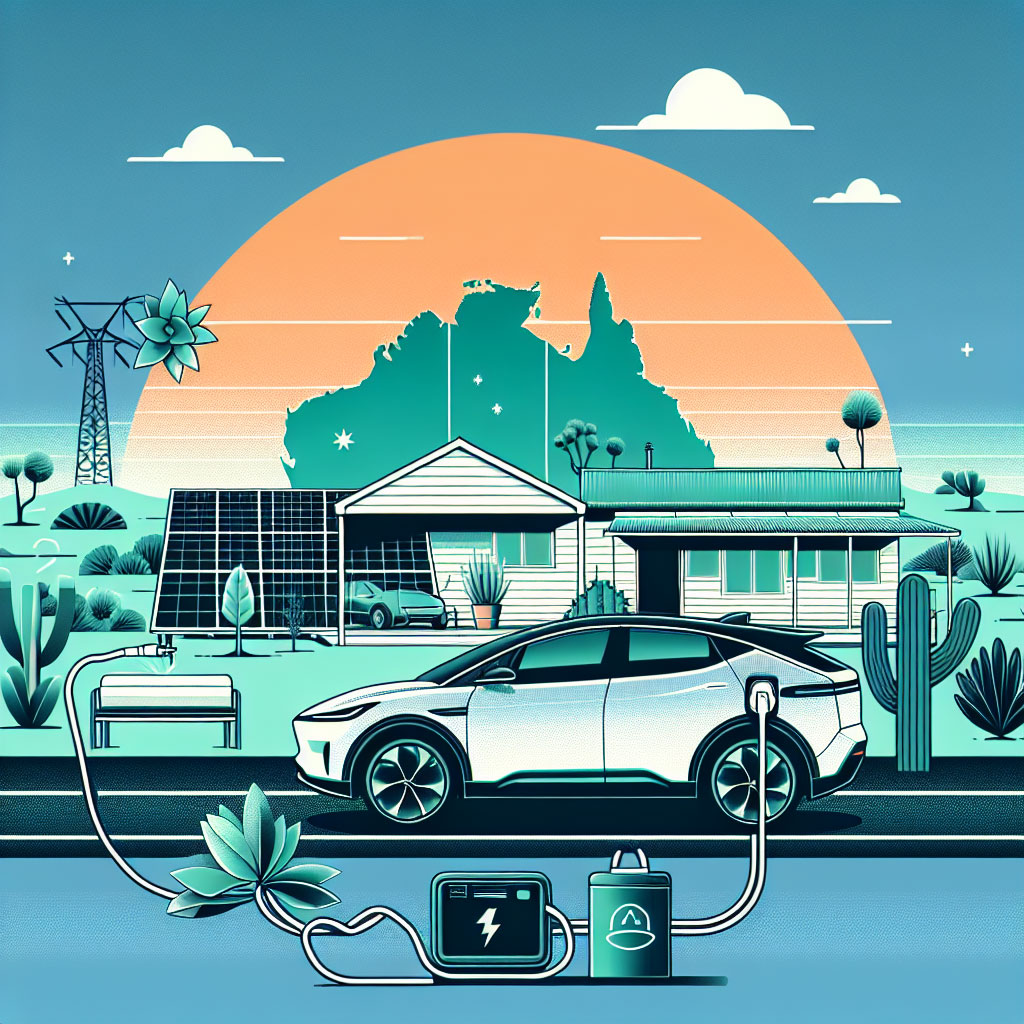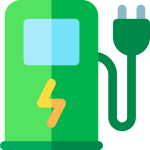
Electric vehicles are reshaping more than transport – they are redefining how Australians produce, store and trade electricity. Terms such as V2L, V2H and V2G have entered the conversation, but they can be confusing. Here’s a clear, practical guide to what these acronyms mean, how they interact with home solar and the grid, and what homeowners and EV buyers in Australia should watch for in the near term.
Why the fuss? Think of an EV as a large, mobile lithium‑ion battery. All EVs can accept energy from the grid or rooftop solar; some can also send energy back out. That two‑way capability – broadly “bi‑directional charging” – enables several use cases: powering tools at a campsite, sustaining a house during an outage, or exporting energy to the grid for payments. The feature set available to you depends on the vehicle, the charger, and rules set by network operators and regulators.
V2X – the umbrella term
V2X stands for Vehicle‑to‑Everything and covers all bidirectional flows of energy between the vehicle and external systems. Under that umbrella are V2L, V2H and V2G – each describing a different target for the energy leaving the car.
V2L – Vehicle to Load: simple and immediate
V2L (Vehicle‑to‑Load) is the simplest form of bidirectional use. Many vehicles provide a 230 V socket or a vendor‑supplied adaptor/cable so you can plug in household appliances directly from the car battery. It’s ideal for:
- Camping and events (fridges, coffee machines, lighting)
- Power tools on remote jobsites
- Short‑term emergency uses during outages
Practical notes for Australian owners:
- Typical outputs are in the 1.5-3.6 kW range on many models. For example, several BYD, Hyundai and Genesis models offer on‑vehicle outlets or V2L adaptors (check the latest specs for each model).
- V2L does not require a wall charger or special home wiring; it draws from the car’s battery through a dedicated socket or cable.
- Use is limited by battery state of charge – manufacturers commonly recommend avoiding V2L below a specific minimum (BYD suggests not below 15%, for instance).
V2L is handy and often lifesaving in short outages, but it’s not a like‑for‑like substitute for a whole‑home battery system. Home battery systems are integrated into household wiring, can be configured for automatic transfer and may continue to be charged by rooftop solar during some grid outages (if they and the inverter are certified to be islanding‑capable).
V2H – Vehicle to Home: a potential home battery substitute
V2H (Vehicle‑to‑Home) lets an EV operate much like a stationary home battery, discharging into a household electrical system via a bi‑directional charger and an energy meter. For many households – particularly where the car is parked at home overnight and the roof space produces surplus solar – V2H could reduce or eliminate the need for a separate home battery.
Key points:
- V2H requires vehicle support plus a compliant bi‑directional charger and appropriate metering and switchgear. It’s not just a cable from the car to a powerboard.
- In some configurations, V2H can be grid‑forming and provide backup power during an outage while also allowing rooftop solar to charge the car – but this depends on the charger and inverter being capable and certified to operate in island mode.
- Nissan Leaf (Gen 2) has been a notable example of a model with V2H/bi‑directional capability historically because of its CHAdeMO charging architecture; other manufacturers are adding or preparing compatible systems.
V2G – Vehicle to Grid: earning value from your battery
V2G enables the EV to export energy to the distribution network. Through participation in services such as Virtual Power Plants (VPPs) or ancillary services markets, EV owners may be paid for exports during periods of high demand or for network support.
What Australians should know:
- V2G can be remunerative: when wholesale prices spike or networks require capacity, EVs can be dispatched to export and earn above standard feed‑in tariff rates.
- V2G participation almost always requires a bi‑directional charger and an approved market or aggregator – you can’t simply flip a switch and sell to the market.
- V2G is not, in itself, a replacement for home backup during a blackout unless the system includes grid‑forming capability designed and certified to supply isolated premises.
Bi‑directional chargers: the technical linchpin
A bi‑directional charger enables power to flow both into and out of the vehicle. There are two main flavours commonly discussed:
- AC bi‑directional chargers (vehicle inverter performs DC↔AC conversion): typically lower‑power but less complex.
- DC bi‑directional chargers (charger handles DC↔AC conversion): can offer higher power but are more technically demanding and currently rarer/costlier.
As of mid‑2024, availability of certified bi‑directional chargers in Australia remained limited and relatively expensive. A number of international vendors were developing products and pilot projects were underway, but wide market availability and affordable pricing were still emerging. Buyers should check for:
- Compatibility with their vehicle’s charging protocol (CHAdeMO, CCS2, manufacturer‑specific). Historically CHAdeMO supported bi‑directional use more readily; CCS2 bi‑directional implementations were progressing but not yet universal.
- Certification and approvals from the local Distribution Network Service Provider (DNSP) and compliance with Australian electrical standards.
- Whether the charger supports grid‑forming/islanding if you want blackout backup.
Regulation, networks and market readiness
The transition from pilots to mainstream V2G/V2H depends as much on regulation and network rules as on technology. Australian federal and state agencies, market bodies and DNSPs have been working on frameworks to manage export limits, safe connections, metering and participation in markets. That work has accelerated in recent years, but rollout timelines vary by state and by network.
For home owners this means:
- Seek DNSP and retailer guidance before installing bi‑directional equipment. Some networks require prior approval; others require specific certificates or limitations.
- Check whether your electricity retailer or aggregator runs VPPs or V2G programs and the commercial terms they offer.
Warranty, warranties and battery life
Concerns about accelerated battery degradation are understandable. Research and pilot programs up to mid‑2024 suggested that managed V2G/V2H operations – where exports and depth‑of‑discharge are optimised – have a modest incremental impact on battery life compared with normal driving cycles. Key mitigations include:
- Limiting depth‑of‑discharge used for grid services.
- Using smart software to minimise unnecessary cycling.
- Manufacturers and aggregators increasingly offering warranties and commercial terms that recognise controlled bidirectional uses.
Nonetheless, check your vehicle’s warranty fine print. Some manufacturers restrict which chargers you may use and under what conditions while under warranty. Always confirm with the manufacturer or dealer before committing to a specific bi‑directional installation.
Practical advice for homeowners and buyers
- If you’re considering V2H or V2G, buy an EV that explicitly supports the function in your market and confirm compatible chargers and aggregators.
- Install rooftop solar now if you don’t already have it: it improves the economics of V2H and increases available energy for export with V2G programs.
- Be proactive with your DNSP and electricity retailer: approvals and contracts matter.
- Treat V2L as a practical and low‑friction feature for short‑term loads and emergencies; treat V2H/V2G as system upgrades requiring planning and potentially additional hardware and regulatory clearance.
Conclusion
Bi‑directional charging – whether V2L, V2H or V2G – expands the value of electric vehicles beyond transport. In Australia, the technology promises household resilience, new revenue streams and more efficient use of rooftop solar. Yet the benefits will not fall into place overnight: they rely on compatible vehicles, certified chargers, supportive network rules and clear commercial arrangements. For now, V2L is the most accessible feature for everyday owners. V2H and V2G are real and advancing, but buyers should proceed with careful enquiries about vehicle compatibility, charger certification, DNSP approvals and warranty impacts. If you own or plan to buy an EV and you have rooftop solar, you are already well positioned to benefit as the market and regulation catch up.
Frequently asked questions
What’s the difference between V2L, V2H and V2G?
V2L (Vehicle‑to‑Load) powers external appliances directly from the car via a socket or adaptor. V2H (Vehicle‑to‑Home) discharges the EV into the household electrical system via a bi‑directional charger and energy meter, effectively acting as a home battery. V2G (Vehicle‑to‑Grid) exports energy from the EV back into the distribution network for market or network services and potential payments.
Do Teslas support V2H, V2G or V2L in Australia?
As of mid‑2024, Tesla had not enabled general V2G/V2H/V2L functionality for its vehicles in Australia; the company has historically focused on its own stationary battery solution, the Powerwall. Always check Tesla’s guidance and firmware updates for any changes.
Will using V2G or V2H damage my battery or void my warranty?
Managed V2G/V2H operations tend to have only modest incremental impact on battery life when controlled properly, but outcomes depend on depth of discharge, cycling frequency and battery chemistry. Manufacturers’ warranty terms differ – confirm approved chargers and authorised use with the vehicle maker to avoid voiding coverage.
Do I need a special charger to use V2H or V2G?
Yes. V2H and V2G require a certified bi‑directional charger plus appropriate metering and sometimes switchgear. Conventional one‑way chargers cannot export energy from an EV.
Can I use my EV to power the house in a blackout?
Potentially, yes – but only if the EV, charger and inverter are configured for islanding/grid‑forming operation and the installation has been approved and commissioned correctly. V2L can be used in a limited way for essential loads directly from the vehicle, but it’s not an automatic whole‑house backup.
Will I be paid for exporting energy from my EV to the grid?
Possibly. Payments depend on market conditions, program participation (for example via a VPP or aggregator) and the retail/market arrangements offered. During peak price events, export payments can be materially higher than standard feed‑in tariffs, but terms vary.
About EV Evolution
EV Evolution is the leading online platform dedicated to Australian electric vehicle owners and enthusiasts. We foster a vibrant community, delivering essential EV news and insights, and enhancing user engagement through our innovative, AI-powered chatbot for dynamic discussions. Our mission is to empower Australian electric vehicle owners and enthusiasts by fostering a vibrant, AI-driven online community that connects, informs, and advances the nation’s electric vehicle landscape.




